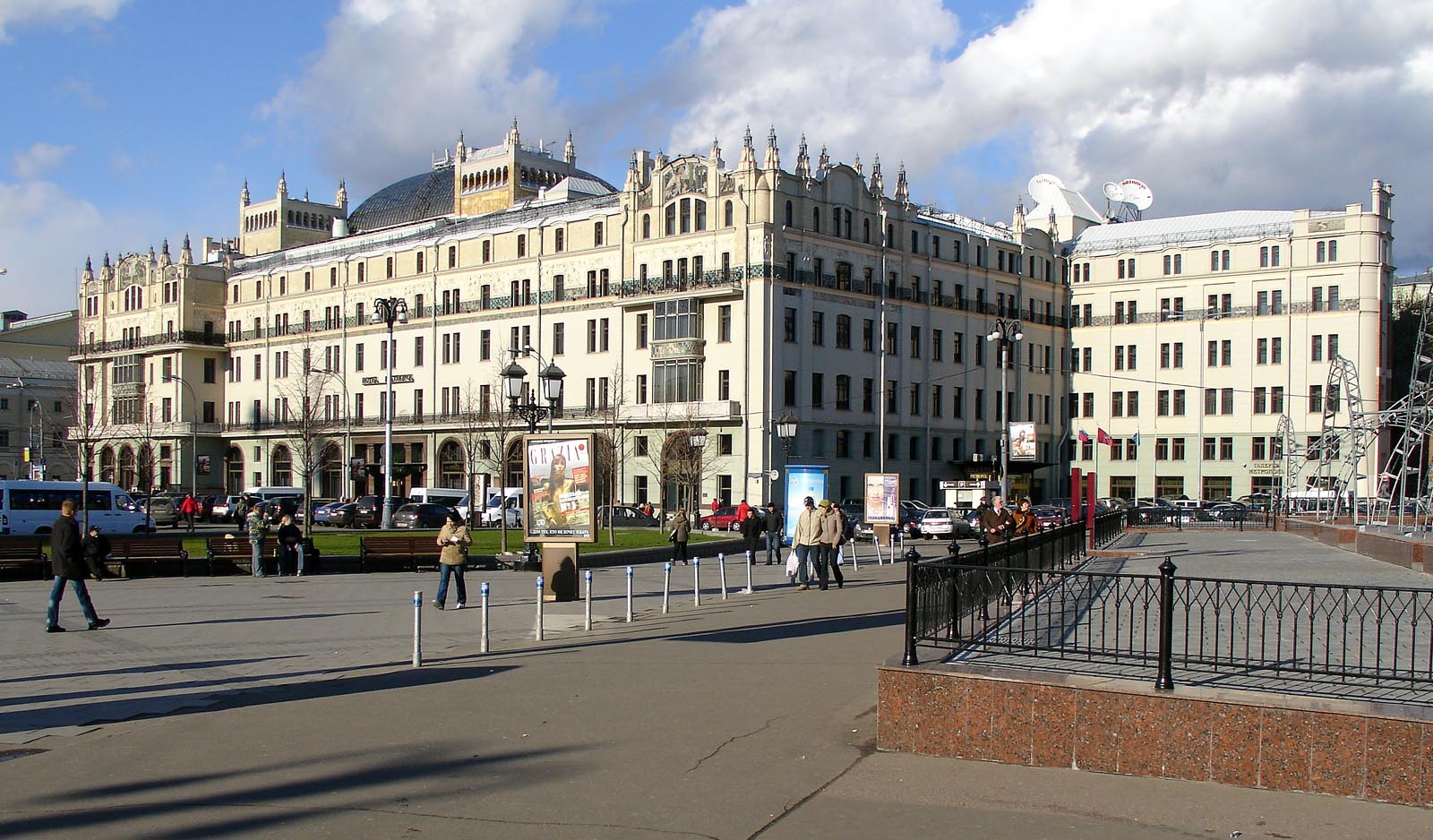- Hotel Metropol (Moscow)
Infobox Modern building

caption=Southern facade, 2007
name=Hotel Metropol
location_town=Moscow
location_country=Russia
architect=William Walcot ,Lev Kekushev ,Vladimir Shukhov
client=Petersburg Insurance,Savva Mamontov
engineer=
construction_start_date=1899
completion_date=1907
date_demolished=
cost=
structural_system=Reinforced concrete
style=Art nouveau |Hotel Metropol (Russian:Метрополь) is a historical hotel in the center of
Moscow ,Russia , built in 1899-1907 inArt Nouveau style. It is notable as the largest extant Moscow hotel built before theRussian Revolution of 1917 , and for the unique collaboration of architects (William Walcot ,Lev Kekushev ,Vladimir Shukhov ) and artists (Mikhail Vrubel ,Alexander Golovin ,Nikolai Andreev ).In 1898,
Savva Mamontov and Petersburg Insurance consolidated a large lot of land around the former Chelyshev Hotel. Mamontov, manager and sponsor ofPrivate Opera , intended to redevelop the area into a large cultural center built around anopera hall. In 1898, professional jury of an open contest awarded the job toLev Kekushev , however, Mamontov intervened and assigned it to English architectWilliam Walcot , who proposed a refinedArt Nouveau draft codenamed "A Lady's Head" (implying the female head ornament repeating inkeystone s over arched windows). Mamontov eventually hired Kekushev as a construction manager. Soon, Savva Mamontov was jailed for fraud and the project was taken over by Petersburg Insurance, omitting the original plans for opera hall.In 1901, the topped-out shell burnt down and had to be rebuilt from scratch in reinforced concrete. Kekushev and Walcot hired a constellation of first-rate artists, notably
Mikhail Vrubel for "Princess of Dreams" mosaic panel,Alexander Golovin for smaller ceramic panels andNikolai Andreev for plasterfrieze s. The hotel was completed in 1907. However, it is nowhere near Walcot's original design (Brumfiels, fig.56, compare to actual, fig.59-60).A notable feature of "Metropol" is "its lack of any reference to the orders of architecture ... a structural mass shaped without reference to illusionistic systems of support" (Brumfield). Rectangular bulk of Metropol is self-sufficient, it needs no supporting columns. Instead, "Texture and material played a dominant expressive role, exemplified at the Metropole by the progression from an arcade with stone facing on the ground floor to inset windows without decorative frames on the upper floors" (Brumfield).
In 1918, the hotel was nationalized by
Bolshevik administration, renamed "Second House of Soviets" and housed living quarters and offices of growingSoviet bureaucracy . Eventually, in 1930s it was converted to its original hotel function and went through a major restoration in 1986-1991 by Finnish companies as part of Soviet-Finnishbilateral trade . [ [http://helecon3.hkkk.fi/FI/yrityspalvelin/pdf/1996/fyit.pdf YIT - Vuosikertomus 1996] - page 40 fi icon] Today, "Metropol" has 365 rooms, and each is different in shape or decoration.Gallery
References
*William Craft Brumfield, The Origins of Modernism in Russian Architecture, University of California Press, 1991 [http://content.cdlib.org/xtf/view?docId=ft1g5004bj&chunk.id=d0e2066&toc.id=&brand=eschol chapter 3, fig.56-60]
* [http://www.hotel-metropol.ru/ official site]
Wikimedia Foundation. 2010.
